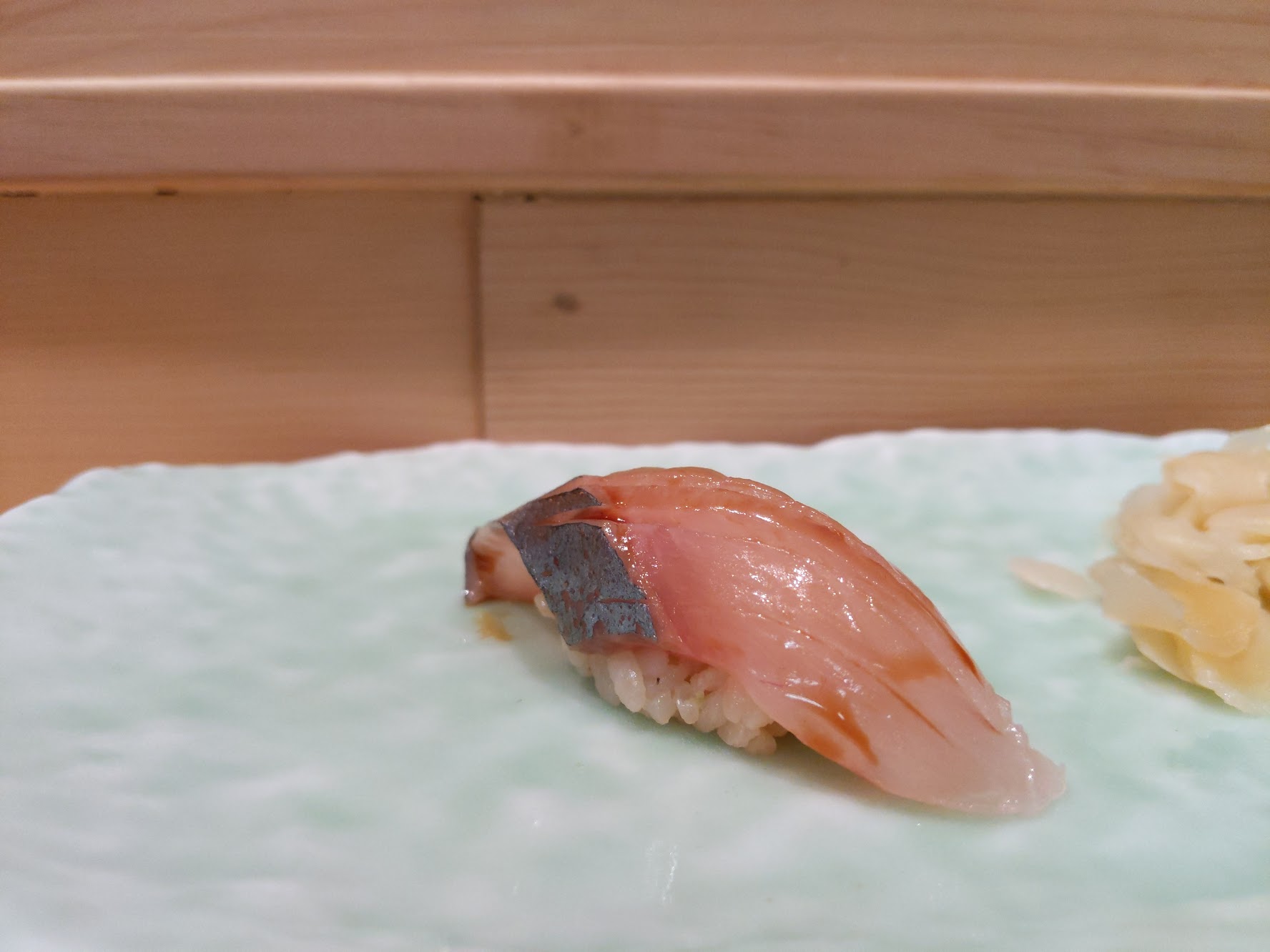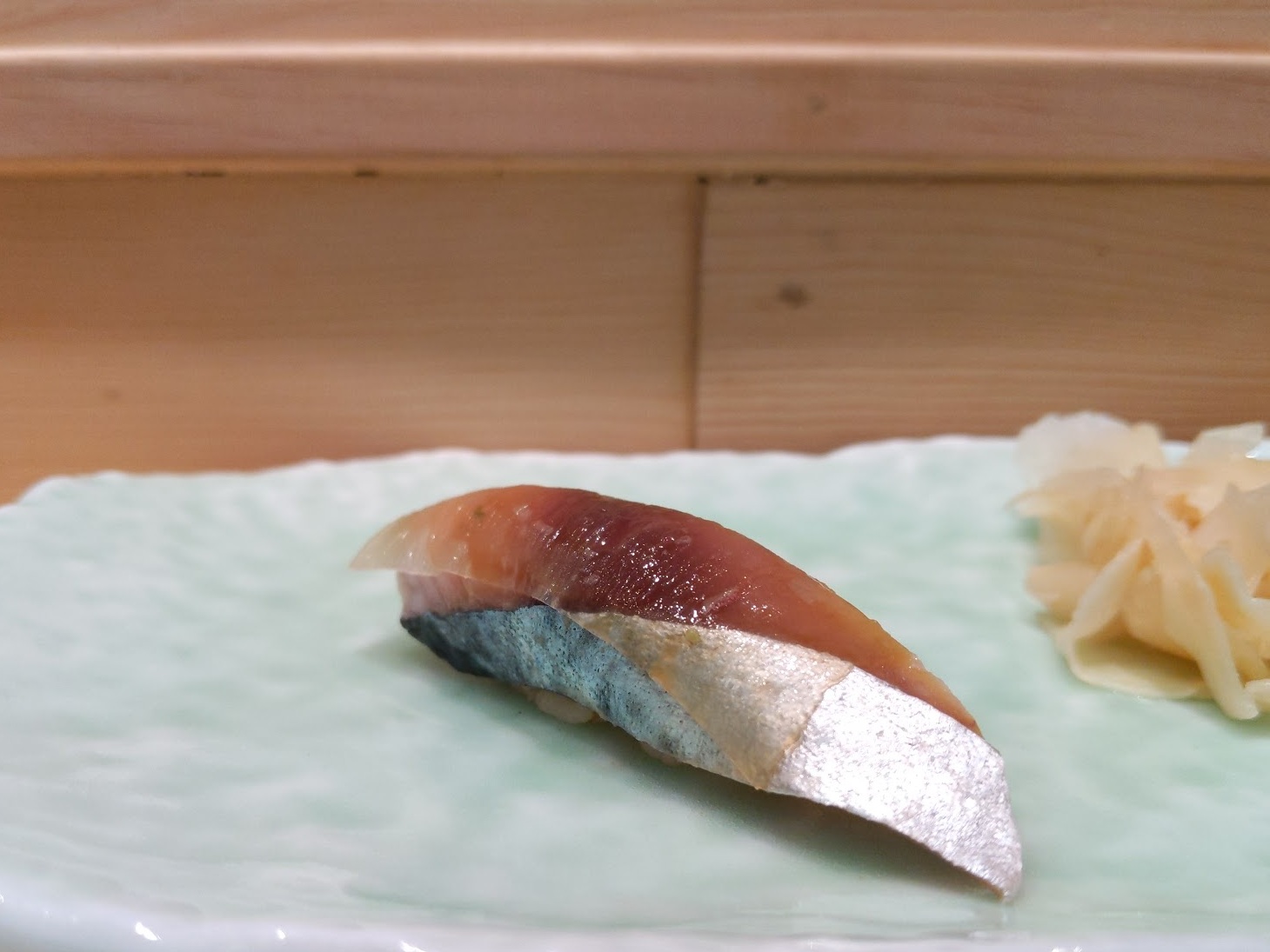Oma San Francisco Station
TL;DR
Best bang for your buck for fancy sushi in the city (San Francisco proper). Assuming you don’t have a massive “hearty appetite” like me, you can get a very good sushi meal for $80 - $100 all in here. The fish and shari are not the crème de la crème, not even in SF, but it is more than good enough for the price and there are quite a few very good pieces. The chefs and wait staff are also very hospitable, making for a much more pleasurable dining experience than sitting at attention with your back straight in front of a serious and severe sushi sensei for 2+ hours. Small sake selection, ranging from ~$50 - $180 for a bottle with a smaller selection of by the glass for $6-7.
THE SHOP
Oma San Francisco is a sushi counter (literally, a counter and nothing more) located in Japantown. To find it, look for Andersen Bakery (divine strawberry shortcakes, perfect for dessert after your sushi meal) and turn the corner to its left. Voila, a sushi counter with no storefront. As you sit and eat, your bare back is against the open mall floor.
From their website, it sounds like Oma is short for お任せ (omakase):
“In Japan, Omakase (お任せ) “entrust the chef” is a popular style of dining, where the guests entrust the chef with the meal selection. As this is a great honor, the chef in turn vows to use the freshest ingredients, masterful techniques and bursts of innovation, to create a truly memorable dining experience. Oma San Francisco Station is proud to present this simple, yet elegant way of dining to all of our guests.”
What you actually can get at Oma is お決まり(okimari), aka set menus at specific prices. As of January 2019, they are as such:
のぞみ Nozomi / $85 / 12 Pieces of Nigiri, 1 Temaki, Miso Soup
ひかり Hikari / $55 / 8 pieces of Nigiri, 1 Temaki, Miso Soup
こだま Kodama / $30 / 5 pieces of Nigiri, 1 Temaki, Miso Soup
These menus are named after the bullet trains lines of the 東海道新幹線 (Tokaido Shinkansen) line running between Tokyo and Osaka. Hence, the name “Oma San Francisco Station” and the cool graphic of a Japanese train station in SF on their website.
You also have the option of making a reservation on their website and selecting the Secret Menu for $125, which contains 18 pieces of sushi, 1 temaki hand roll, and miso soup. Given the set price, this is really okimari as well.
THE STORY
Today marks my 3rd visit to Oma. All 3 times, I did walk-in. Today, we got really lucky and snagged the last two seats in their 6:45 seating. I would really recommend reservations if you’re going for dinner.
We had the Nozomi menu (see below) and added on 4 more items:
縞鯵 (shima-aji) - striped jack. Shima-aji is usually one of my favourites, but at Oma, it is just okay. Stick with the mackerels.
えんがわ (engawa) - the fin muscle of the flounder. The chef here at Oma introduced me to this cut last time I visited. It is amazing. Really flavorful, crunchy, and fatty. Hard to believe it came from the same fish as hirame. Chef said that most sushi shops get hirame whole so if a shop is serving hirame, chances are they will have engawa as well. Ask the chef politely at the end when he’s offering you more pieces.
中トロ (chu-toro) - I typically like chu better than o, so I had to try Oma’s. Better than their fatty tuna.
いくら (ikura) - Oma’s self-marinated salmon roe is excellent. Mild and not overly salty. It is slightly more sweet than most other places. They have great supple texture and pop super satisfyingly as well. A great gateway drug to the land of cured fish roe :)
Throughout dinner, we chatted with Chef Wilson (opening chef of Tsubasa in Hayes Valley) and the other chef whose name I didn’t catch (he previously worked at Ijji). They both remembered me from my previous visits (I talk too much and ask too many questions). They are relatively easy going and very accommodating, asking diners to tell them if they would like to adjust the wasabi level or 舎利 (shari) sushi rice amounts. The environment was not stiff or uptight like you might feel in some sushi establishments.
YJR was a bit salty that my piece of engawa had a long “tail” that his didn’t :P
Nozomi menu on January 11, 2019:
平目 (hirame kobujime) - flounder from Korea, marinated in kelp. Autumn and winter are its best season.
岩魚 (iwana) - Arctic char from Iceland, lightly torched. I don’t care what any snobby sushi eater says (PDF, I’m looking at you), salmon / trout / char are delicious. Fatty, meaty…so satisfying, especially with a little bit of char (pun intended). Who cares if it doesn’t really “showcase” a sushi chef’s skills?
鰤 (buri) - wild yellowtail from Niigata. Chef said this is in season right now.
赤身 (akami) - lean blue fin tuna from Spain. This was pretty good.
胡麻鯖 (goma-saba) - wild sesame mackerel from Miyagi.
あん肝 (ankimo) - monkfish liver. Prepared in house, this is really good. Light and delicate, not fishy at all. YJR, who claims to normally not care for this much, really enjoyed it.
金目鯛 (kinmedai) - wild golden eye snapper from Miyagi.
帆立 (hotate) - scallop from Iwate. Really meaty and delicious…could use a bit more acid though. Oma’s serving size of scallop is the largest anywhere I’ve been. Haha.
鰆 (sawara) - wild Spanish mackerel from Miyagi. My favourite piece of the night.
トロ手巻き (toro-taku temaki) - hand roll of chopped blue fin tuna with pickled radish. Really delicious
かます (kamasu) - wild barracuda from Chiba. Also delicious, chef said this was one of his favourites.
トロ (toro) - I am actually not sure if this is 大トロ (o-toro) from the belly or カマトロ (kama-toro) from the collar. A little too melty for my taste.
雲丹 (uni) - sea urchin from Hokkaido / Russian Sea.








